16 Book Photography Ideas to Get You Inspired (with Pictures)
Last Updated on
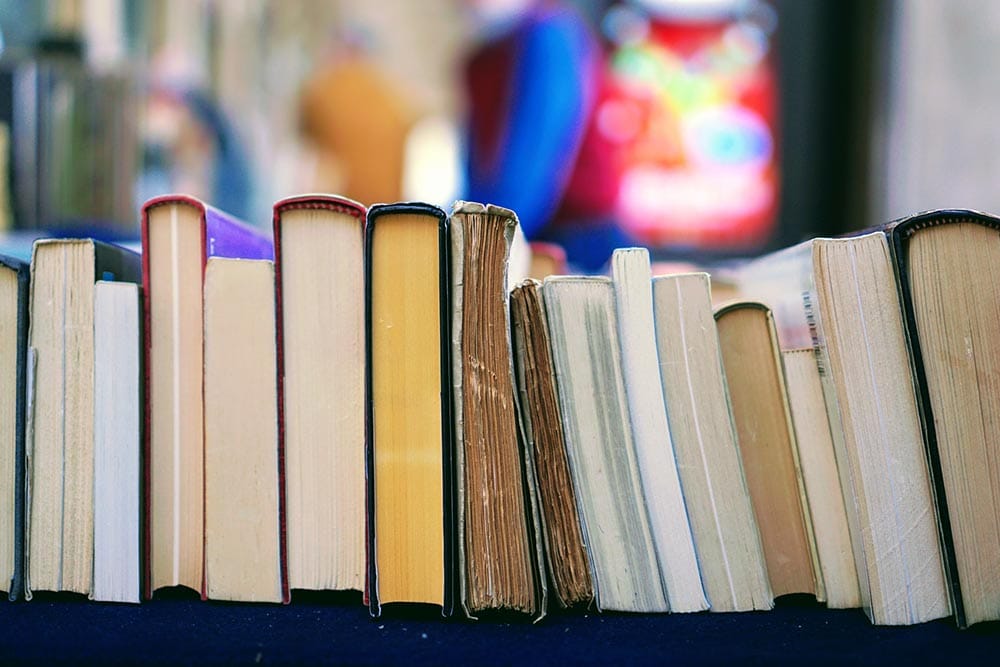
Photographing books is surprisingly difficult. Internal pages seem to suck up the light, making lighting a challenge, while book covers reflect and diffract light, making it just as challenging to get good exterior shots. However, with a little practice and using the 16 tips below, it’s possible to get some appealing, compelling, and attractive book photographs for your “bookstagram” or for any other purpose.

The 16 Book Photography Ideas to Get You Inspired (with Pictures)
The Books
1. Photograph the Spines

Different editions of books can use different cover art and spine art, which means there are millions of different spines to photograph, including antique-looking and more modern ones. Considering the combinations of book spines, this means that there are virtually limitless photo opportunities. Generally, it is best to stick to a theme of some sort, whether it’s a particular style of art, the age of the books, or even the colors of the spines.
2. Cover Artwork
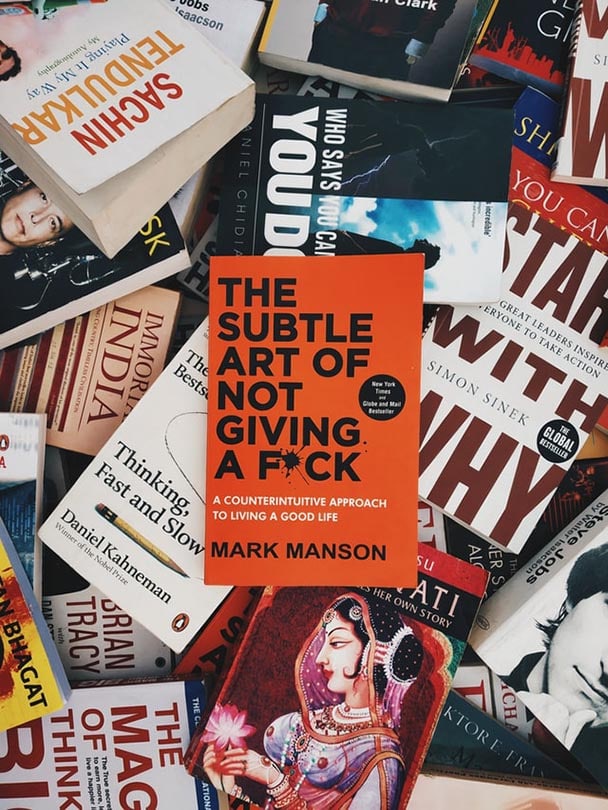
Some book covers are works of art in their own right, so you might as well use this to your advantage and create great-looking book photos. Either arrange them individually or as a collection and take a few shots to make sure you get the lighting right.
3. Photograph Open Pages

It isn’t just the covert art and spines that appeal to readers and your viewers. An open book can look really attractive when in focus and is especially attractive if the book you photograph has attractive text. Worn pages also give the appearance of the book having been read, so do not be afraid to photograph old books in this way.
4. Use Your Favorite Books

Using your favorite book, or books, means that you will naturally show it some love, which will translate to your image and give you a better-looking picture as a result.
5. Unique Edges
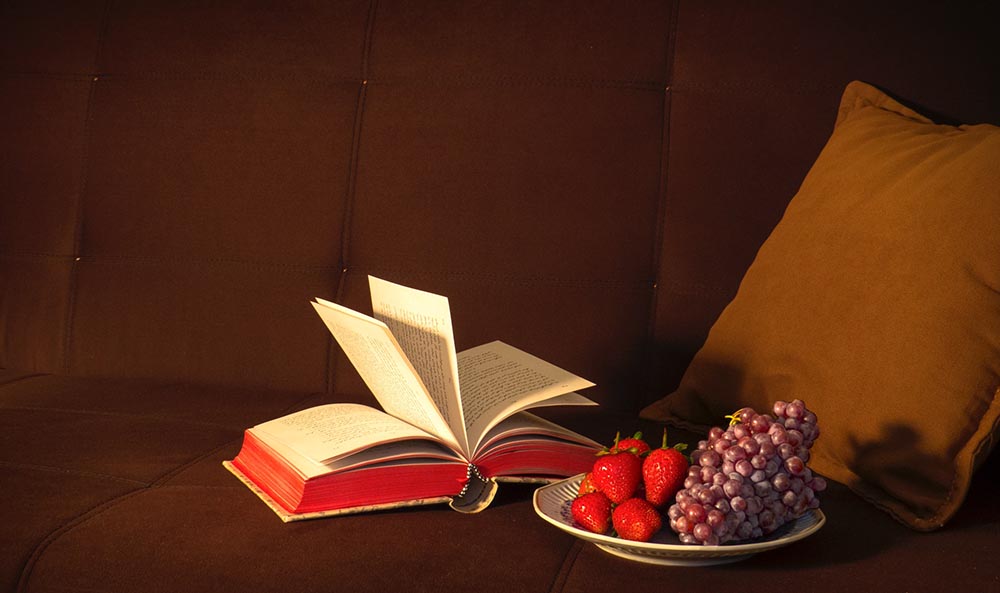
Although it’s quite rare for publishers themselves to spray book edges nowadays, there are some books that have silvered edges and even stenciled edges. And, if you’re crafty and really want the shot, you can try your own hand at stenciling some art onto the fine edges of the paper.
Composition
6. Book on Table

When it comes to photo composition, using a table might be obvious, but it’s a popular shot for a reason. The table doesn’t take center stage, but it does offer a stable surface on which to work, and it can also hold props and other items.
7. Book on Bed

Another popular shot is that of the book on a bed. This works well with white or neutral bedding, and it sets a warm scene of reading in bed. Thankfully, the bedding doesn’t have to be made, either, because crinkled sheets tend to look better than uniformly folded, perfect bedding.
8. Fan a Series

If you’re trying to showcase a series of books, you don’t have to line them up in a neat row or stack them tidily. Fanning the books allows you to show the covers and the number of books.
9. Stack Them Up

Book stacks are especially appealing to readers, as they envisage being able to bury their heads and devour the full selection. When stacking, you can either opt for books of the same size or in the same series, or go completely off the path with a random selection of book sizes and styles.
10. Stacks and Stacks of Books

If you’re looking for a more generic book photo that showcases quantity rather than quality or artwork, find an old book shop or library, or use your own collection if it’s an extensive one, and photograph multiple stacks. Focusing on one stack blurs the rest of the books and gives the appearance of getting lost in the words.
11. Color Coordinate Your Books

If you’re ordering books at home, it’s typical to go with the author name, but if you’re trying to get a striking picture or creating a stunning bookshelf for your home décor, color coordinating is great. You don’t have to coordinate your entire collection in this way, but you can choose a pile of similarly colored books and achieve a great-looking color gradient.
12. The Hand
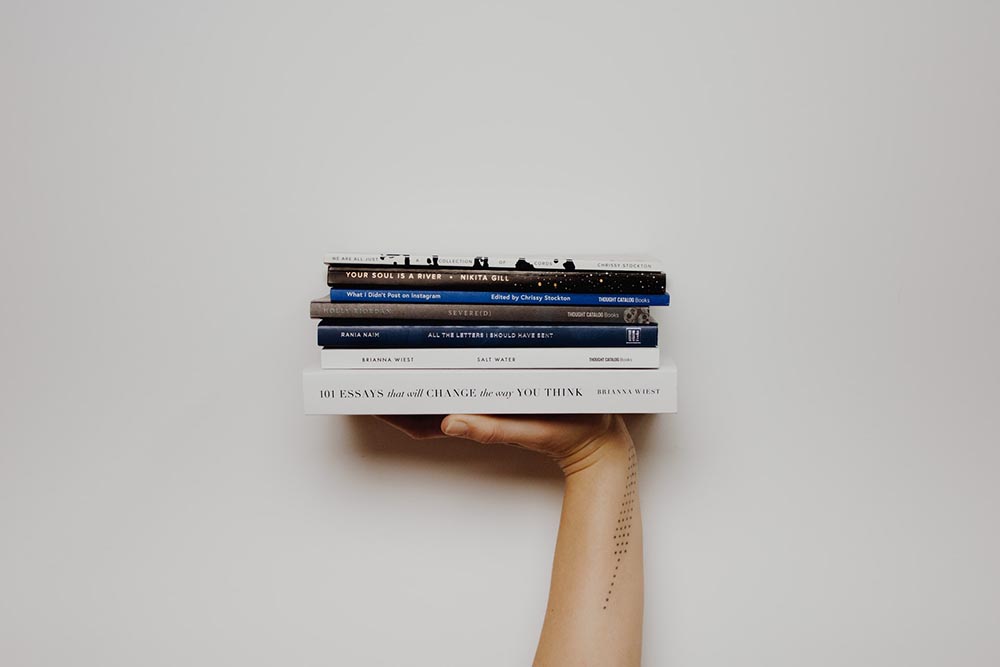
Most book lovers will tell you that holding the book itself is part of the appeal of a paper book, and this is something that digital and e-books don’t offer. There are plenty of ways to photograph books and book covers, including having you holding one—the reader’s equivalent of an action shot.
13. Book Accompaniments

Some props work naturally with books. Glasses, for example, are a common feature in book photographs because they hint at reading and they walk the viewer through the process. However, you can use virtually any prop to help bring a photo to life.
Lighting
14. Use Natural Light

Photographing books can be difficult, especially because of the shadows and distortion that open and curved pages can create. Try to use natural light where possible, and rather than fight shadows, use them to your advantage.
15. Photograph Outdoors

One of the best ways to get natural light is, of course, outdoors. Choose a sunny day, ensure the light is at your back, and photograph yourself reading. Alternatively, get a photo of the book itself while taking advantage of natural light.
16. Monochrome Photography
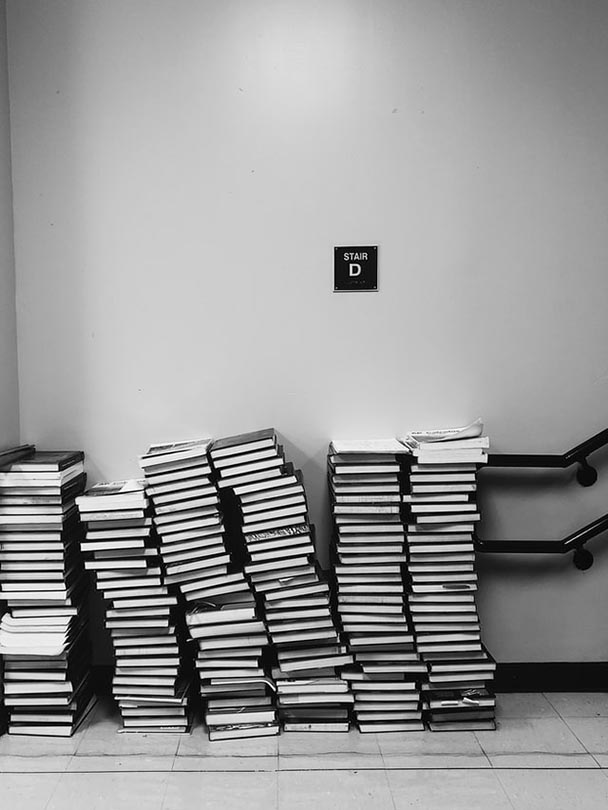
Sometimes, books don’t behave the way you want them to. They can be odd shapes, look too battered for a good photo, or they don’t color coordinate how you’d like them to. Play with the shapes and consider using monochrome photography. This doesn’t have to mean black and white, you can opt for sepia tones or another monochrome style.

Conclusion
Whether you’re starting a bookstagram account and showcasing your favorite reads or you simply love to show off beautiful book images, hopefully, the tips above will help inspire you to get some amazing photos and images. However, the best tip of all is to practice. Play around with lighting, try new props, and look for inspiration in other peoples’ photographs.
Featured Image Credit By Tom Hermans, Unsplash
About the Author Robert Sparks
Robert’s obsession with all things optical started early in life, when his optician father would bring home prototypes for Robert to play with. Nowadays, Robert is dedicated to helping others find the right optics for their needs. His hobbies include astronomy, astrophysics, and model building. Originally from Newark, NJ, he resides in Santa Fe, New Mexico, where the nighttime skies are filled with glittering stars.
Related Articles:
Monocular vs Telescope: Differences Explained (With Pictures)
How to Clean a Refractor Telescope: Step-by-Step Guide
How to Clean a Telescope Eyepiece: Step-by-Step Guide
How to Clean a Rifle Scope: 8 Expert Tips
What Is a Monocular Used For? 8 Common Functions
How to Clean a Telescope Mirror: 8 Expert Tips
Brightfield vs Phase Contrast Microscopy: The Differences Explained
SkyCamHD Drone Review: Pros, Cons, FAQ, & Verdict
